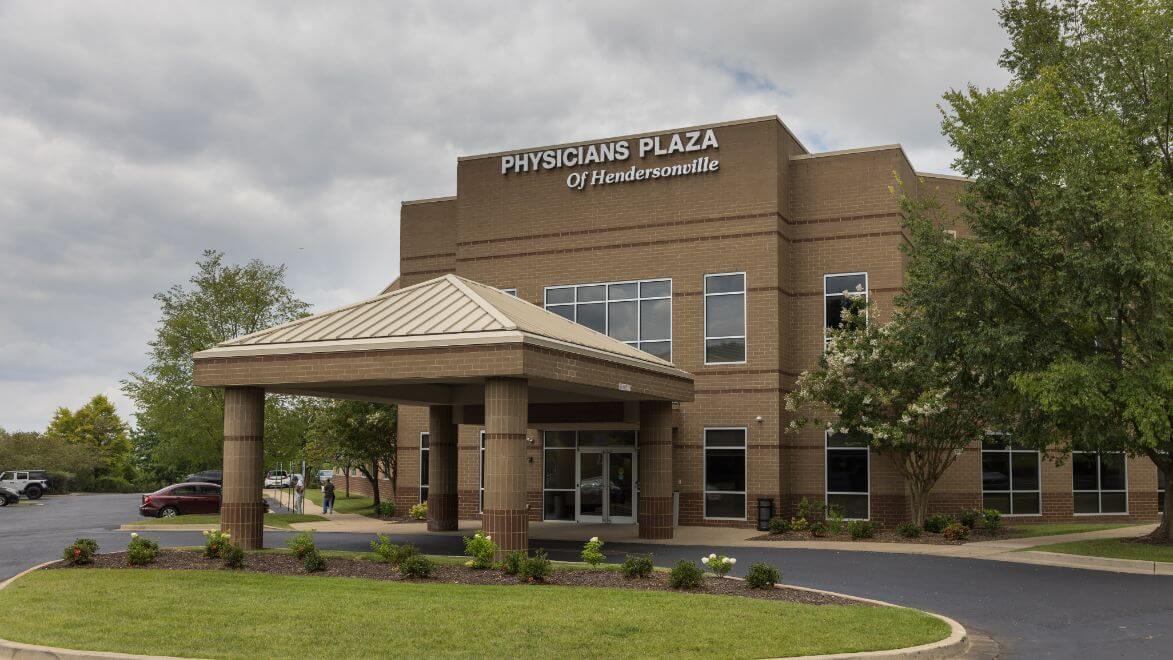Seborrheic Keratosis
Understanding Seborrheic Keratosis: Causes, Symptoms, and Treatment
Seborrheic Keratosis, also known as seborrheic verruca, is a common and typically benign skin growth that often presents as brown, black, or yellow lesions. These growths can appear singly or in groups and may be flat or slightly elevated, sometimes leading them to be mistaken for warts.
While seborrheic keratosis is generally harmless, the growths can vary in color, size, and texture, prompting many individuals to seek professional care for diagnosis and removal. Most people will develop at least one seborrheic keratosis during their lifetime.
Expert Care for Seborrheic Keratosis at Cumberland Skin
Although seborrheic keratosis does not pose a cancer risk, understanding its distinctive appearance is crucial. Because these growths can resemble precancerous lesions, such as actinic keratosis, a dermatology professional may perform a biopsy to confirm the diagnosis. Regular monitoring and seeking care from a skilled dermatologist ensure accurate identification and can help alleviate concerns related to these generally benign, yet sometimes cosmetically bothersome, skin growths.
At Cumberland Skin, our expert team understands the cosmetic concerns that often accompany seborrheic keratosis, especially since these growths commonly develop on sun-exposed areas. Our trusted providers specialize in the evaluation and management of seborrheic keratosis, offering personalized solutions to address aesthetic concerns and maintain optimal skin health.
Schedule an appointment with Cumberland Skin for a thorough assessment and a tailored treatment plan that promotes confidence and comfort in your healthy skin.
Examples of Seborrheic Keratosis
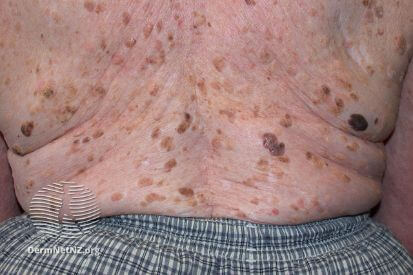
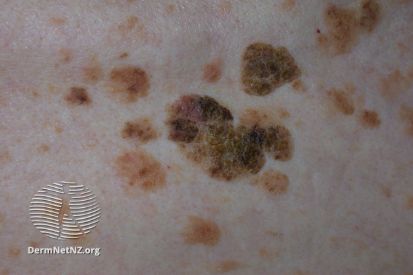
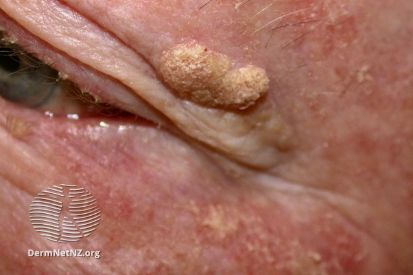
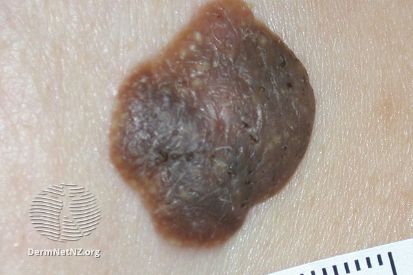
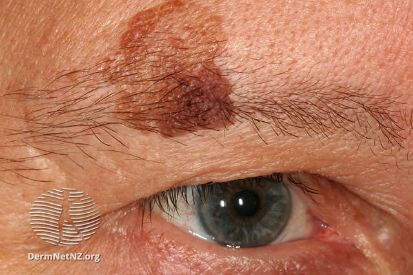
What is Seborrheic Keratosis?
- Benign growth that typically emerges in brown, black, or yellow tones.
- These lesions, singular or grouped, can appear flat or slightly elevated on the skin.
- They are commonly mistakenly identified as warts due to their resemblance.
Causes of Seborrheic Keratosis:
- Age and Genetics: Seborrheic keratosis is more common with age and tends to run in families.
- Sun Exposure: Prolonged exposure to the sun's ultraviolet (UV) rays may contribute to the development of seborrheic keratosis.
- Friction and Rubbing: Areas subject to frequent friction or rubbing, such as clothing folds, may be more prone to these growths.
- Non-Cancerous Nature: Seborrheic keratosis is a benign skin growth, not associated with cancerous changes.
How to Prevent Seborrheic Keratosis
Sun Protection: Given the potential link between sun exposure and seborrheic keratosis, protecting the skin from harmful UV rays is crucial. Regular use of sunscreen with adequate sun protection factor (SPF) and wearing protective clothing can mitigate the impact of ultraviolet radiation.
Hygiene and Skincare: Maintaining good skincare practices can be beneficial such as gentle cleansing routines, moisturizing, and regular dermatologist visits.
Genetic Awareness: Since there is a familial predisposition to seborrheic keratosis, individuals with a family history should remain vigilant. Regular skin checks and early consultation with one of our dermatologists can aid in timely detection and management.
Healthy Lifestyle: Embracing a healthy lifestyle with a balanced diet, regular exercise, and avoiding tobacco can promote overall well-being, potentially influencing skin health.
While these measures may support skin health, seborrheic keratosis remains challenging to prevent entirely, as genetic factors and aging are significant contributors. Regular at-home skin checks, annual Total Body Skin Exams, and bringing attention to any suspicious growths are crucial for early detection and treatment.
Seborrheic Keratosis FAQs
Seborrheic keratoses are generally harmless and do not turn into cancer. They are considered benign growths, and while they may look similar to certain skin cancers, they pose no cancer risk.
While genetics and aging are primary factors, excessive sun exposure may contribute to the development of seborrheic keratoses. Protecting your skin from the sun can help minimize their occurrence.
No, seborrheic keratoses do not spread to other parts of your body or to other people. Each growth is independent, and they are not contagious.
While removal is often permanent, new growths may appear over time. Regular skin checks with a dermatologist are advisable to monitor any changes and address new developments.
How to Treat Seborrheic Keratosis
If a seborrheic keratosis becomes irritated or unsightly, removal is conducted using one of these three methods:
- Cryosurgery: freezes off the growth using liquid nitrogen.
- Curettage: the dermatologist scrapes the growth off the surface of the skin.
- Electrocautery: used alone or in conjunction with curettage to burn off the tissue and stop the bleeding.
Related Blog Posts
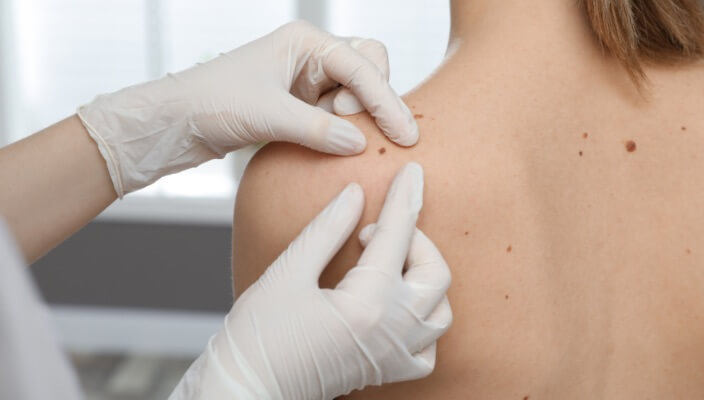
- General Dermatology
- Skin Exams
Preparing for your first dermatology appointment is important because it ensures everything goes as smoothly as possible and that your doctor is up-to-date on the status of your overall health and wellbeing. Here are our expert tips.
Read More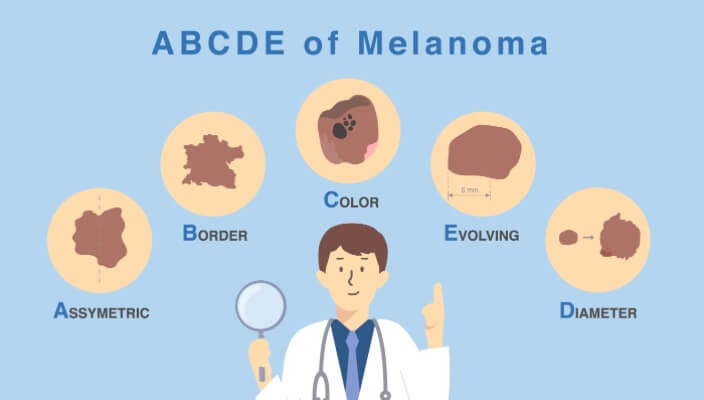
- Skin Cancer
- Skin Exams
Discover the ABCDEs of melanoma. Familiarize yourself with the five key indicators to aid in early detection and prompt medical attention for any suspicious moles or skin lesions.
Read More
- Skin Care
- Cosmetic Treatments
Unlock the secrets to achieving radiant, glowing skin. Explore expert tips and skincare routines tailored to nourish and revitalize your complexion, empowering you to embrace a luminous and youthful appearance.
Read MoreFeatured Products for Seborrheic Keratosis
Check your local office for current stock!
Check your local office for current stock!

